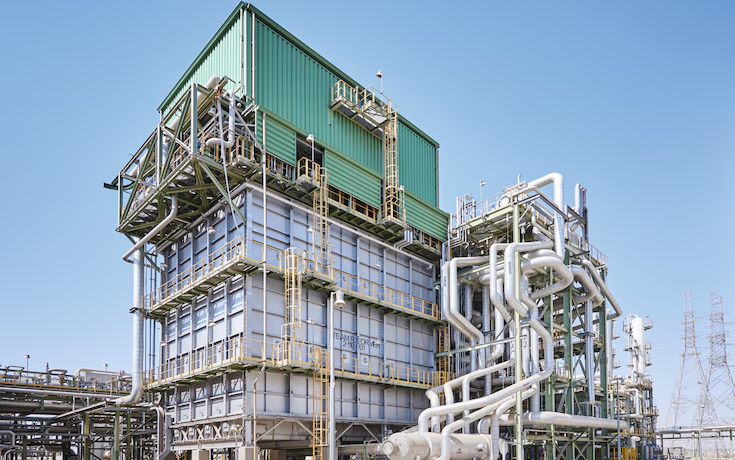
With the complex interlacement of the chemical sector, its regulatory landscape stands as a very sophisticated and ever evolving framework shaping much of industry behavior. This paper lays open the challenges launched by regulatory compliance in the chemical sector, noting the multi-faceted aspects of abidance with guidelines, the changing global regulative landscape, and the strategic approaches undertaken by businesses to navigate these intricate waters.
1. The Crucial Role of Regulatory Compliance
It is not only a legal duty for the chemical industry, but regulatory compliance also forms the bedrock of responsible business behavior. The industry operates in a regime of regulations that ensure safety, environmental protection, and public health. Understanding this intricate regulatory environment is key for businesses to meet not just statutory requirements but to gain trust, ensure sustainability, and contribute to the overall well being of the community.
2. The Multifaceted Aspects of Regulatory Compliance
2.1 Safety Standards and Protocols
Safety is central to the regulatory compliance of chemical products and processes. The manufacture, storage, and transportation of chemicals are subject to rigorous standards and protocols concerning safety. Companies have to make tough investments in safety measures, employee training, and emergency response mechanisms to comply with these regulations and reduce risks in chemical handling.
2.2 Environmental Regulations
This warrants that the regulation in the chemical industry should be centered on environmental stewardship. Compliance remains the imposition of various overarching requirements to reduce environmental impact and foster sustainability. Businesses will hence have to maintain collected ecological technologies, waste management systems, and various pollution control measures that are consistent with changing environmental regulations.
3. The Evolving Global Regulatory Landscape
3.1 Harmonization and Standardization
The regulatory framework also varies from one region to another, and this makes the task of achieving harmony in compliance quite a challenge. This requires global companies to navigate through differing regulatory demands, which require insight into regional differences while seeking consistency in compliance strategies.
3.2 Emerging Regulatory Trends
The global regulatory landscape is not static but develops to meet the emerging challenges and advances in technology. A business has to be on the lookout for such regulatory trends as a move toward more concentration on sustainability, circular economy principles, and integration of digital technology into regulatory reporting. Getting ahead of such trends is important for proactive compliance.
4. Compliance Challenges in the Chemical Sector
4.1 Complex Regulatory Frameworks
The second level of challenge pertains to the sheer complexity of the regulatory frameworks: often negotiated through a maze of multiple regulations coming from different jurisdictions, requiring dedicated resources, expertise, and a strong compliance management system. Complex issues related to classification of chemicals, safety data sheets, and reporting obligations add to the complexity that businesses have to sort out.
4.2 Cost of Compliance
Compliance usually involves some kind of cost toward the business. For one to meet the needed regulatory standards, investments in technologies, personnel training, infrastructure upgrades, among others, cost the company in one way or another, specifically SMEs that can ill afford it. A balance between compliance and financial viability is an eternal seesaw in the world of chemicals.
5. Strategic Approaches to Regulatory Compliance
5.1 Proactive Regulatory Intelligence
To stay ahead, proactive regulatory intelligence is needed. The business concern should establish ways to monitor, interpret, and project the development of regulations. Engaging with industry associations, taking part in regulatory forums, and using available digital means for real time updates are strategic approaches to maintaining a proactive stance on compliance.
5.2 Integrated Compliance Management Systems
An integrated compliance management system presents a competitive advantage for organizations in the chemical industry. Such systems make operations of regulatory processes efficient, manage regulatory documentation, and ensure reporting capabilities in real time. Resources channeled into technology that integrates compliance functions enhance effectiveness, reduce the risk of non-compliance, and create a landscape overview of responsibilities vis à vis regulation.
6. Technological Influence on Regulatory Compliance
6.1 Digital Solutions for Compliance Reporting
Operating in a digitally transformed world, technology intervenes to alleviate the challenges that surround compliance reporting. Digital tools regulatory compliance software are employed by enterprises to automate reporting processes for accuracy in reporting, while making communications with regulatory bodies a lot easier. This integration of technology will not only raise efficiency but also reduce the chances of human errors in compliance documentation.
6.2 Blockchain for Transparency and Traceability
Blockchain technology has started to gain popularity in the chemical industry as it would enhance clarity and tracking in following rules. Utilizing blockchain in supply chain management produces safe, unchangeable records of the regulators and stakeholders to check on compliance. This ultimately makes audits easier and will also build trust between companies and regulatory agencies.
7. Collaboration and Industry Initiatives
7.1 Collaborative Compliance Initiatives
Businesses dealing in the chemical industry find that compliance challenges are universal; therefore, they often cooperate. They share best practices and collaborate on research and development for technologies that would help in compliance. They join hands to advocate changes in regulations, creating common knowledge and resources.
7.2 Industry Associations and Regulatory Forums
Joining industry groups and regulatory forums is a smart way for businesses to deal with compliance issues. These groups give information about regulatory trends, provide chances to meet others, and help start conversations with regulators. Working with peers and regulatory bodies creates a teamwork environment that helps both businesses and regulatory agencies.
8. The Impact of Non-Compliance: Risks and Consequences
8.1 Reputational Risks
Non compliance with such acts is one of the major reputational risks for a business in the chemical industry. Environmental violations, safety breaches, or failure to comply with regulations result in public scrutiny and damage to brand reputation, eroding consumer trust. Proactive compliance is vital in protecting a good corporate image.
8.2 Legal and Financial Consequences
The legal and financial effects of not following the rules are serious. Fines, penalties, and lawsuits can lead to big money problems. Also, not following the rules can cause interruptions in work, suspension of permits, or even closing down facilities. Businesses need to understand the serious risks involved and make strong efforts to comply to reduce legal and financial problems.
9. Conclusion
Thus, in a nutshell, treading the regulatory landscape in the chemical industry requires foresight into strategy, integration of technology, and collaboration. Essentially, as the global regulatory environment is increasingly changing, it calls for the need for businesses to shape up in their approach to becoming proactive and responsive toward trending issues. Embracing technology, fostering industry collaboration, and implementing integrated compliance management systems are key strategies for not only meeting regulatory obligations but also thriving in a sustainable and compliant manner. The chemical sector faces many challenges with rules and regulations. However, by planning carefully, businesses can find a way to succeed sustainably while following all the important rules.
Trending Posts

Global Silver Nanoparticles Market
The global silver nanoparticles market was valued at $2.08 billion in 2020, and is projected to reach $4.1 billion by 2027, growing at a CAGR of ~17%

LNG Bunkering – Here is something you must know!
In the current scenario of growing pollution, companies are trying to adapt more and more sustainable approach that not only gives eco-friendly result

The Basic Pension Comes - Federal Cabinet Decides On the Pension Supplement
Financial security in old age is an issue that is causing stomach pains for more and more people in Germany. Low-wage earners fear the elderly. The ba

The Future of Artificial Intelligence
In recent years, the field of artificial intelligence (AI) has witnessed unprecedented growth and transformative advancements. As AI technologies

Sailing into the future with Autonomous Ships
Autonomous Vehicles (AVs) are the uproar of this era. After airways, thanks to the companies like Tesla, that people are now getting used to see drive

Rising Demand For Uninterrupted Power Supply Is Expected To Drive The Power Rental Market
Todays world is totally reliant on electric power. There are many things which are not manageable without electricity. Power rental is a concept where

Rapidly growing IT industry coupled with the trend of bringing your own device (BYOD) is expected to provide new opportunities for growth of Cloud Collaboration
Cloud collaboration is the process of sharing and co-authoring the computer-based work through cloud technology

Factcheck on UV Disinfection for COVID-19
Many regulatory authorities and bodies believe that UV disinfection technologies can play a role in a multiple barrier approach to reducing the transm

The Global Ventilator Market Grows at a CAGR of 7.75 %
The Global Ventilator Market, which was at $688 million in the year 2016, is about to double by the year 2025, and reach a value of $1,347 million. Th

Vaccination: Vaccination Against Measles is Now Mandatory in Germany
The subject of compulsory vaccination has always heated peoples minds and caused emotionally charged discussions. The latest law in this area - the ob
Recent Posts

Growth and Future Trends of the Global In-Line UV-Vis Spectroscopy Market
In-line UV-Vis spectroscopy is a powerful analytical tool widely adopted in various industries for real-time monitoring of chemical and biological processes. This market is experiencing robust growth due to its applications in pharmaceutical.

Understanding the Growth Dynamics of the Premium Luggage Market
The market for premium luggage has grown massively over the years. This is attributed to several factors, including a change in consumer preference, increase in disposable incomes, and an overall rise in international travel.

Global Potassium Sorbate Market: Growth and Forecast
The Global Potassium Sorbate Market has gained significant traction due to the rising demand for preservatives across various industries, especially in food and beverages. Potassium sorbate, a salt of sorbic acid.

Global Venturi Masks Market Growth and Forecast
Venturi masks, also known as air-entrainment masks, play a crucial role in delivering a precise oxygen concentration to patients, particularly those suffering from chronic respiratory conditions such as COPD (Chronic Obstructive Pulmonary Disease).

Global Venous Thromboembolism (VTE) Therapeutics Market: Overview, Growth, and Forecast
Venous thromboembolism (VTE) is a critical medical condition including deep vein thrombosis and pulmonary embolism. In fact, it is one of the preventable causes of death in the hospital environment. It has experienced a substantial upsurge.

Global Vein Illumination Device Market: Growth and Forecast
The global vein illumination device market is experiencing significant growth, Due to a growing demand for minimally invasive procedures and an increase in chronic diseases, not to mention development in medical technology.

Global Vasculitis Treatment Market: Growth and Forecast
Vasculitis represents a group of disorders involving inflammation of blood vessels. It can affect parts of the body such as the skin, kidneys, lungs, and joints, and without proper treatment it may cause severe morbidity.

Global Fired Heaters Market: Growth and Forecast
The global market for fired heaters is growing at a rapid pace due to increased demand from major industries such as the oil & gas, chemical, and petrochemical sectors. Fired heaters are among the most crucial components of process heating systems.

Global Gas Flares Market Growth and Forecast
The growth in oil and gas production, environmental regulations, and a need for an effective waste gas management system are driving the global gas flares market. Gas flares are a crucial equipment in the oil and gas industry.

Global Steam Reformers Market: Growth, Trends, and Forecast
The steam reformers market is witnessing significant growth due to increased demand for hydrogen in industries like chemicals, refining, and fertilizers.
